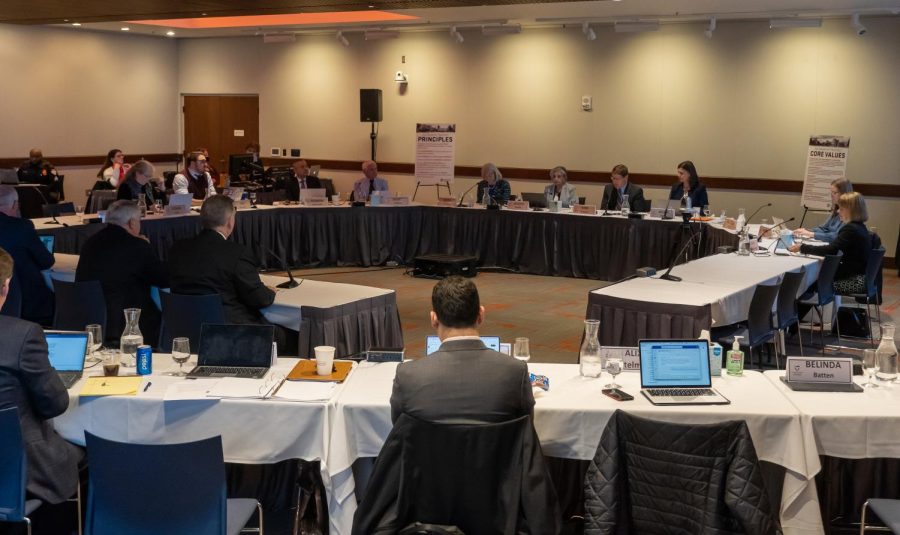Board of Trustees raises tuition and financial aid
The Board of Trustees meeting on April 14 in the Memorial Union. Due to recommendations made by the University Budget Committee, continuing undergraduate students will have to pay 3.9% more in tuition payments whereas incoming undergraduate students will have to pay 4.4% more. These changes apply to both Corvallis and Cascades campuses.
April 17, 2023
Both incoming and continuing students will have to pay more in tuition and certain fees next year, Oregon State University’s Board of Trustees has decided.
In the Board of Trustees meeting on April 14, trustees voted on this resolution with no opposition.
For the academic year 2023-2024 and summer 2023, continuing undergraduates will have a 3.9% increase in tuition for both Corvallis and Cascades campuses, new undergraduate students will have a 4.4% increase in tuition for both Corvallis and Cascades and undergraduates in Ecampus will have a 1-3.9% increase.
The decision was made according to the recommendations made by the University Budget Committee, a group of faculty, students and staff appointed by the Provost that makes recommendations for the entire university budget, including Ecampus and the Corvallis and Bend campuses.
The University Budget Committee started working on reviewing the university’s budget beginning in October and making recommendations to university leaders in February and March.
According to Steve Clark, vice president for university relations and marketing, national and local inflation, revenue sources, state contributions, philanthropy, research grants and tuition are all considered in the process.
These decisions also follow the Board of Trustees’ policy that annual tuition rate increases will be between two and five percent–barring major financial issues–in order to create more predictability for students in terms of how tuition will change each year.
According to Joe Page, student fee committee chair, while the cost of higher education continues to rise, the availability of financial aid doesn’t seem to rise along with it.
“I understand the university’s need (to) generate revenue—we don’t have an institution unless it can pay its bills. The state needs to do more to lower costs for students—which is why ASOSU lobbies the state government to increase funding for higher education,” Page said.
Clark said that the total amount of financial aid available for OSU students has increased by $10 million, with the total amount for next year at $95 million.
According to Clark, this is over double the amount in 2018-2019, which was around $42 million, but the unpredictability of the future means it would be difficult to guarantee the Board of Trustees would commit to future increases.
“The Board of Trustees doesn’t know what’s going to happen in the future … but (the $95 million) is an assured commitment for next year,” Clark said. “It’s a pattern of commitment to OSU students that we’re mindful of the impact of tuition on students and their families.”
Going forward, Clark said the Board will discuss ways to engage more students with student leaders, groups and organizations, as a part of a desire to grow participation in tuition forums held each winter.
According to Clark, this will educate students on how the university balances its costs with the amount of money that comes from tuition, state legislation and more.
“Students may, in fact, become one of the strongest advocates for the State of Oregon to increase the amount that taxpayers provide for higher education,” Clark said. “20 years or more ago, the state supported two thirds of the cost of higher education at OSU in Corvallis. Now students and their families are paying for that percentage, and the state is paying less than 30%.”The tuition and mandatory fee schedules that the board approved are shown in Exhibit A on their website.
























































































































